Ultra fast fashion takes everything harmful about fast fashion and speeds it up. But that only starts to describe its dark side. This exposé dives deep into TikTok #hauls, brands’ gross labour abuses, and creepy “surveillance capitalism”.
The most troubling story in fashion
Like many trends in the 2020s, the story of ultra fast fashion starts with TikTok. And it often goes something like this. A young woman poses in a bedroom, hugging a bunch of plastic bags. She raises an eyebrow, bites her lip, and then winks before the video quickly cuts to the next clip: her hands on a pair of scissors, opening the first of many packages.
Over the next 30 seconds, this video jumps between ripping bags open and modelling what’s inside—elf cosplay ears, butterfly printed socks, more plastic bags containing individually plastic-wrapped garments and accessories. It’s all set to Taylor Swift’s “Blank Space”. As Swift sings “you look like my next mistake”, the TikToker empties another package on her bed, covering her mouth in excitement.
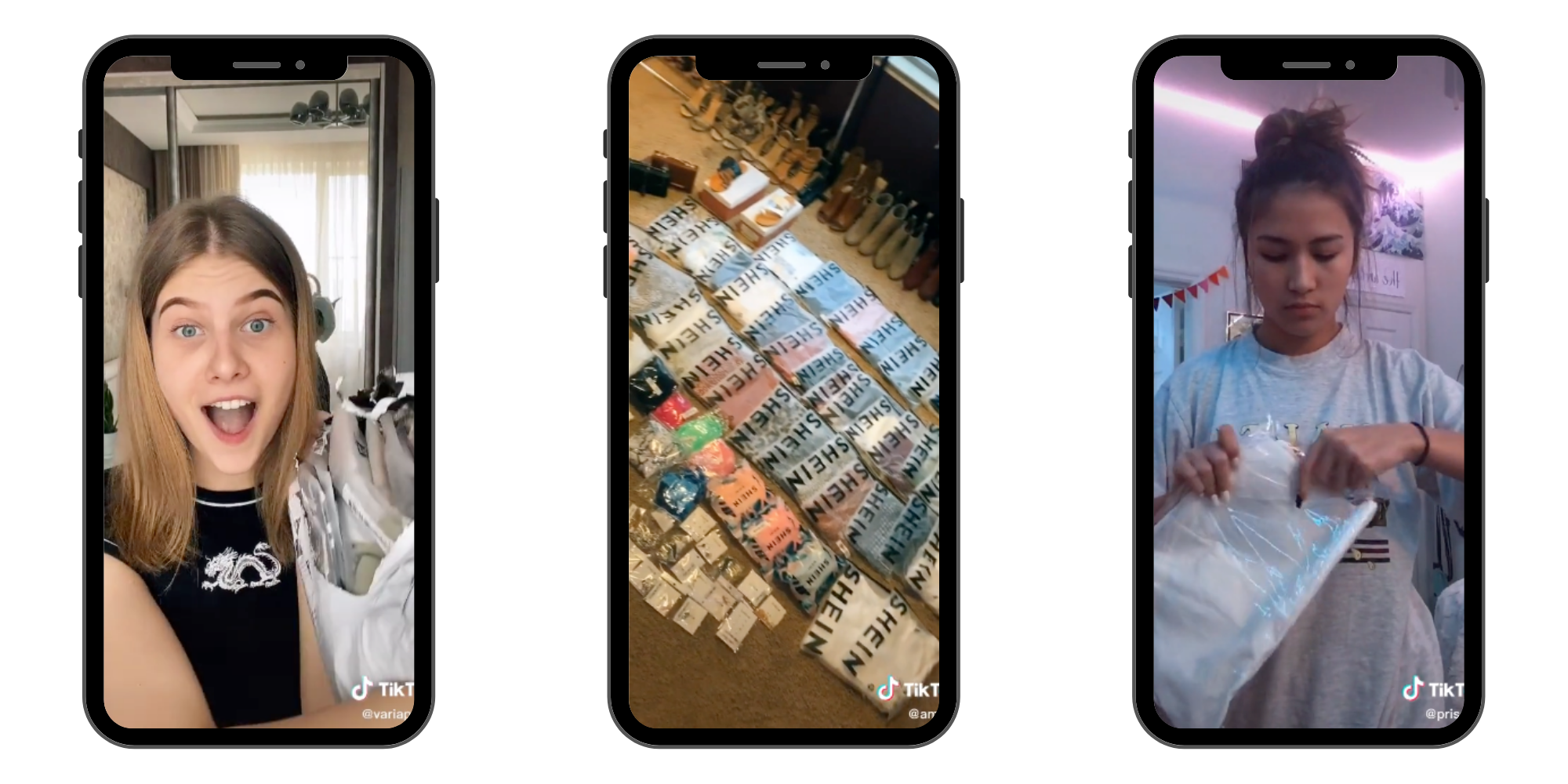
There’s no use in individually calling out this TikToker or this video, which has racked up more than 700,000 likes. It’s nowhere near the most watched video of its kind. She’s simply reenacting the fashion haul meme, which has become massively popular with young social media users. Hauls first emerged on YouTube in the 2010s. But they’ve reached new levels of notoriety in the 2020s on TikTok among Gen Z shoppers. Videos tagged with #haul on TikTok have cumulatively been viewed more than 15 billion times as of writing, and that number increases every minute.
When you scroll through fashion hauls, you see countless examples of consumption on steroids. In one typical video that’s captioned “*accidentally* spent $480 at #SHEIN”, a TikToker unpacks big boxes and lays dozens of packaged garments out in her room, covering the floor. In another video captioned “Another haullll #princesspolly”, a different TikToker shows off dresses she purchased during Princess Polly’s Black Friday sale. “You’re not going to believe me when I tell you how much I paid for these,” she says as she holds her plastic-wrapped dresses, “’cause it’s insane—it was so cheap.”
Most consumers on TikTok seem to know little about ultra fast fashion’s dark side.
Considering the plunging prices for fast fashion over the past few decades, these garments are historically cheap in terms of both quality and price. They’re the products of a relatively recent mutation of fast fashion known as “ultra fast fashion”. If that sounds ultra bad, that’s because it is.
Ultra fast fashion ranks among the most troubling stories in fashion and tech today. But with all the cheerful displays of overconsumption, most consumers on TikTok seem to know little about ultra fast fashion’s dark side—how this newish wave of brands accelerates the industry’s environmental impacts, worsens garment workers’ already dismal job conditions, and stalks shoppers all over the web to predict what you’ll want to buy next.
Ultra fast fashion v fast fashion: what’s the difference?
What is ultra fast fashion? In the simplest sense, ultra fast fashion retailers take everything bad about fast fashion and speed it up. That means faster production cycles, faster trend churn, and faster to the landfills. The clothing is ultra plastic, with at least half of these garments made from virgin plastics that will shed microfibers into waterways and the air for years to come. Consequently, the negative impacts on workers and the environment reach depressingly new lows. And it’s only getting worse.
Using Good On You’s independent ratings, I surveyed the sustainability records for five of the most popular ultra fast fashion brands—SHEIN, Fashion Nova, Boohoo, PrettyLittleThing, and Cider. What I found is both distressing and unsurprising: all of these brands receive Good On You’s two lowest scores, “We Avoid” and “Not Good Enough”, for their records on key social and environmental issues.
The industry’s widespread exploitation of garment workers constitutes, in the words of Business of Fashion contributor Bandana Tewari, “modern-day colonialism”. And ultra fast fashion brands appear to be taking the industry’s deplorable record to new lows.
For their track records on labour, in particular, these brands again receive the lowest marks. We’ve found zero evidence that any of these brands pay living wages—100% of these brands fail to disclose any meaningful information about forced labour and the wellbeing of the workforce. And watchdog groups have found that the situation is dire. With SHEIN’s suppliers, for example, a late 2021 report from NGO Public Eye revealed that workers were putting in 75 hour weeks, receiving only one day off per month, and pay per item of clothing—all in gross violations of labour laws.
100% of these brands fail to disclose any meaningful information about forced labour and the wellbeing of the workforce.
“If fast fashion for the past few decades has been characterised by low prices, high volume, and relentless pace, then the new wave of ultra fast fashion brands are pushing those three criteria to their absolute extreme—and pushing millions of already impoverished garment makers to the breaking point”, says journalist Lauren Bravo, author of the essential handbook “How To Break Up With Fast Fashion”.
For many millennials, fast fashion conjures early 2000s memories of trips to the shopping centre to check out the latest styles at well-known stores like H&M, Zara, American Apparel, Forever 21, and Abercrombie & Fitch—a handful of the many multinational brands that get grouped under the fast fashion umbrella. Fast fashion ushered in an unprecedented era where trends seen on the runway could pop up on racks at your local mall in a few weeks’ time. Where once fashion revolved around a couple of seasonal collections per year, these trend-focused retailers essentially changed that to 52 “seasons”, with their collections seeming to change each time you’d stop by.
Ultra fast fashion turns fast fashion’s “weeks” into days and “dozens of styles” into hundreds and thousands. The numbers alone sound sinister. Brands like SHEIN and Boohoo are reportedly posting thousands of new styles to their websites on a daily basis. Sometimes, knockoffs of trending celebrity and pop culture styles will appear online in as little as 24 hours, as so happened with a knockoff of a vintage Thierry Mugler dress Kim Kardashian wore. It’s e-commerce that seems to happen in real time.
“We’ve reached the point where clothing is now essentially being sold as a ‘Fast Moving Consumer Good’, in the same category as snack foods, fizzy drinks, toothpaste—as something entirely disposable, to be consumed once and then thrown away,” Bravo tells me. “Except, of course, with fashion there is no ‘away’. Those synthetic clothes will be weighing down the planet for a century or more.” That’s only where the bad news begins.
The big, bad brands taking over your feed
Influencer culture is now deeply embedded into the supply chain. The leader in TikTok’s haul of shame is indisputably SHEIN. My analysis into the brands that get the most #haul views on TikTok found that SHEIN’s number into the billions, with similar brands trailing in the hundreds of millions. (Conducting similar research, a UK-based brand agency found in June 2021 that SHEIN far outshone its competitors in TikTok exposure.) Clocking in at hundreds of millions of views, brands like PrettyLittleThing and Boohoo—both owned by the UK-based Boohoo Group—are also household names on TikTok.
These brands’ popularity on social media represents the pinnacle of shopping as entertainment—with poor quality garments produced as if they were only intended to last for a TikTok moment.
People are no longer shopping for clothes—they’re shopping for content.
Lauren Bravo
Voir cette publication sur Instagram
“People are no longer shopping for clothes—they’re shopping for content,” says Bravo. “It’s no coincidence that ultra fast fashion has grown alongside social media and influencer culture. Together, those industries have shifted perceptions of clothes as tactile, tangible real-world items to products that primarily just need to look good in a TikTok or Instagram photo.”
Ultra fast fashion retailers have no brick and mortar stores. They keep their operations entirely online, where their overhead costs are low and impulse purchases are instantaneous. And unlike the traditional fashion marketing mix, ultra fast fashion focuses its efforts overwhelmingly on TikTok, where they work with a vast network of teenage and early twenty-something shopping influencers. Demographically, white Gen Z women in Europe and North America produce the most viewed videos, but the brands have a global, multilingual reach.
And similar to how fast fashion grew during the cash-crunched Great Recession, ultra fast fashion brands have seen exponential growth through the pandemic, as locked down young people have been spending record amounts of time in front of digital screens—swiping through videos and quickly purchasing many of the trendy garments they see.
Disposable culture is now the norm
Hauls are one of the dominant fashion memes today. And that plays a key role in redefining our relationships with clothing. “A lot of fashion content on TikTok is haul and consumption based, which makes it seem like fashion is all about shopping, when in reality, fashion is an artform that exists outside of shopping”, says Lily Fang, the creator who runs the popular @imperfectidealist TikTok account focused on sustainable fashion.
Certainly, anyone who spends some time engaging with fashion content on TikTok could easily get a distorted sense that ultra fast fashion is the beginning and end of fashion. And that perspective seems to be shaping a generation of content creators. The target audience for sponsored “hauls”—where prominent TikTokers often receive free products and some level of compensation to post about their fashion binges—is overwhelmingly young women.
It’s hugely wasteful. We’re already seeing it with SHEIN taking over thrift stores.
Lily Fang
Ultra fast fashion’s aesthetic focus on popular celebrities only adds to the overconsumption itch. Where fast fashion has often drawn influence from high fashion’s runways, ultra fast fashion brands look to social media’s most popular figures. In 2021, SHEIN tapped Khloé Kardashian and a panel of celebrities as judges for a design competition. Kourtney Kardashian has collaborated with PrettyLittleThing for a collection. And Cardi B launched her first clothing line with Fashion Nova, even rapping in her track “She Bad” that she “could buy designer, but this Fashion Nova fit all that ass”.
“These brands push people to constantly buy—and buy in huge quantities,” Fang explains. “And since they rely on microtrends, it’s hugely wasteful because people will wear something just a couple times before getting rid of it. We’re already seeing it with SHEIN taking over thrift stores.”
A generation now views ultra fast fashion’s historically low price points and disposable culture as the norm, with many young people considering garments worn out after only a few washes. This overproduction and quick disposal has exacerbated fashion’s waste crisis. While verifiable stats about fashion’s impact are hard to track down, at least one study has suggested that for every five garments produced, three end up in landfills or incinerators.
“Ultra fast fashion’s relentless churn makes it almost impossible to consider a purchase before you commit,” Bravo says. “Instead, you take the risk and buy—because when it’s only the price of a sandwich, what do you have to lose?”
@imperfectidealist Reply to @abacus28 as you might suspect, SHEIN is not an ethical or sustainable brand #fastfashionchange #greenwashing #ethicalfashion #greenscreen ♬ original sound – Lily – sustainable fashion
‘Surveillance capitalism’—tracking your every click
Have you ever had a dress put a curse on you and follow your every move? Without giving the plot away, that’s the concept behind the film “In Fabric”, in which a haunted red dress torments an unlucky shopper. That horror comedy seems like quite an apt metaphor for the Orwellian way ultra fast fashion brands capture your data with every click, monitor your every interaction across digital channels, and creepily project pictures of your previously viewed items on almost any website you visit.
Fast fashion brands like Forever 21 and H&M are known for cringey digital marketing tactics, with a barrage of ads and emails that put pressure on you to click and buy ASAP. Ultra fast fashion brands do that, too—but with far more, and far more precise, data.
Companies like SHEIN and Boohoo have built their entire business on harnessing user data to predict what styles will sell next—and sell fast. This has led to considerable growth. SHEIN, for instance, surpassed both H&M and Zara in US sales in 2021.
This commercial success is based, in large part, on TikTok’s infamous artificial intelligence. Every time you view, like, or comment on #haul content, TikTok’s algorithms get better at serving you similar kinds of content you’ll find entertaining. Its algorithm so successfully predicts what you’ll be interested in watching that a headline in The New York Times declared “TikTok reads your mind”. “The algorithm tries to get people addicted”, Guillaume Chaslot, founder of Algo Transparency, told The Times. Chaslot said that each video users watch gives TikTok more information about them, and “in a few hours” the algorithm can detect things like musical taste, interest in drugs, whether they’re depressed, and more potentially sensitive assumptions.
Algorithmic oppression is not just a glitch in the system but, rather, is fundamental to the operating system of the web.
Safiya Umoja Noble
Many analysts believe such algorithms can cause social harm. Increasingly, organisations like the Algorithmic Justice League and scholars such as Safiya Umoja Noble highlight, in the words of Noble, how “algorithmic oppression is not just a glitch in the system but, rather, is fundamental to the operating system of the web”. Similarly, Netflix’s hit documentary “The Social Dilemma” outlined the impacts that platforms like Instagram and TikTok have to manipulate our lives and shape opinions. In 2021, for example, a leaked Facebook report showed that the company was aware that Instagram had negative influences on teenage girls’ body image.
Ultra fast fashion piggybacks on the negative side effects of these algorithmic systems—gathering data from content shared on these platforms and pairing that with the data they glean from their own customers. Many describe this system of stalking users for commercial advantage as ”surveillance capitalism”, a term coined by Harvard professor Shoshana Zuboff.
By surveilling your digital life, brands gain access to a vast web of data that allows them to make increasingly more accurate predictions about what will trend next, often with frightening accuracy.
“It feels as though these brands put far more effort into developing the algorithms that stalk us, study us, and then chase us around the internet with targeted ads, than they do into designing great clothes”, Bravo tells me.
Breaking an ultra fast fashion addiction
In taking over our TikTok feeds, these brands have an extraordinary power not only to increase the pace of churning trends but also to manipulate young peoples’ mental health.
“Fast fashion addictions are often the result of an insecurity,” Fang tells me. “This could be an insecurity stemming from not having enough—pushed by the constant ads—or not fitting in. This isn’t as simple to resolve, but removing yourself from situations that make you feel like you don’t have enough or aren’t enough is a good place to start.”
Fast fashion addictions are often the result of an insecurity.
Lily Fang
Deleting the apps, unfollowing influencers who partake in the #haul culture, and unsubscribing from brands’ marketing emails are a few places Fang says you can start breaking ultra fast fashion’s microtrend obsession. “You can replace that with more supportive content and slow fashion creators who focus on styling, practical tips, etc instead of shopping,” she suggests. Recently, she’s been discovering the joys of getting clothes tailored.
Ultimately, brands are responsible for their massive exploitation of garment workers—creating massive profits for only a handful of billionaires and environmental harm to the planet. But added together, people still have significant power to hold these companies accountable as consumers and push for legislation as citizens. On the regulatory front, the Fashion Sustainability and Social Accountability Act under consideration in New York state is one promising step in this direction.
And in advocating for change, ultra fast fashion addicts will come to rethink not only the ethics of overconsumption but their own personal style.
“If people think they need to constantly shop and participate in trends to be fashionable, I’d argue that they don’t actually have a good sense of their personal style,” Fang says. “Learning to slow down actually encourages you to get more creative.” And in a world where the hustle of microtrends dominate, slowing down is, in its own way, radical.
The post What is Ultra Fast Fashion? Investigating Why It’s Ultra Bad appeared first on Good On You.
What is Ultra Fast Fashion? Investigating Why It’s Ultra Bad
Green Living
How Toad&Co’s Clothes Help Everyone Enjoy the Outdoors
This is a sponsored article about a brand that was independently assessed by our rigorous ratings system. We’re proud to only collaborate with “Good” and “Great” rated brands. Learn more.
US brand Toad&Co has a socially and environmentally responsible approach to clothing, creating pieces inspired by the outdoors and with a lower impact on the environment. Not to mention an enduring commitment to helping everyone get outdoors through its work with non-profits. Read on to discover the brand’s environment-first ethos.
Focusing on what matters most
“We make feel-good clothes for positive impact—fostering community around doing good, enjoying life’s simple pleasures, and embracing the unexpected,” says Sarah Palladino, director of people and impact at Toad&Co as she introduces the Californian brand. This “simple pleasures” concept applies to Toad&Co’s approach to design, too, and prioritises quality and responsibility over trend-led items. This, in turn, means the brand focuses its energy on clothes that are comfy and practical enough for everything from work to outdoor exploring, and on maintaining its ongoing commitments to using lower-impact materials, partnering with cleaner factories, and looking for new ways to do more with less.
Since day one, it’s been about more than just clothes. From choosing sustainable practices in every corner of our business to supporting programs that protect the planet and make the outdoors more accessible to everyone—knowing we stand for more is what keeps us going
Gordon Seabury – CEO at Toad&Co
Lower-impact materials and producer responsibility
Opting for lower impact materials is one of the core ways brands can address their impact on the planet: “Sustainable materials make a world of difference,” Toad&Co says. “We use organic cotton, recycled fibres, and other high-quality materials known for low-impact growing and cleaner manufacturing.”
The brand’s selection of more sustainable materials includes organic cotton, hemp, TENCEL Lyocell, and recycled fabrics like wool, cotton, and polyester. It also looks to third party clothing certifications like bluesign®, OEKO-TEX® STANDARD 100, and Global Organic Textile Standard, and it publishes its list of restricted substances for all to see.
Toad&Co also operates a resale platform, called ToadAgain, online and at its IRL store in Maine, US, to keep its clothes in the loop.
Supporting non-profits and access to the outdoors
Toad&Co donates 1% of its profits to organisations working to empower others and, in particular, enable better access to the outdoors for all.
In 1996, Toad&Co partnered with Search, Inc. to co-found the Planet Access Company, a full-functioning warehouse that trained and employed up to 70 adults with disabilities annually.
Determined not to stop at the front door, the brand also co-founded Search for Adventure in 2004, a unique travel program to facilitate vacations for adults with disabilities. Over 20 years later, the social venture partnership has evolved—and includes a flagship store in Chicago, a program called Visibility Arts that nurtures creativity through sharing Search, Inc. artist’s work, neurodiversity and disability awareness training, and an expanded Search for Adventure program. In 2024, the brand supported 147 nights of camping for adults with disabilities through the program.
We give back to—and partner with—organisations that align with our three pillars of giving: conservation for human enjoyment, equity and accessibility, and do the right thing
Sarah Palladino – director of people and impact at Toad&Co
One of Toad&Co’s key partnerships is with Brave Trails, which is dedicated to LGBTQ+ youth leadership, to support it in putting on accredited camps, mentorship programs, and meet-ups for LGBTQ+ youth.
Shop favourites from Toad&Co’s new collection
Read on to discover some of the standout items that balance style with practicality from Toad&Co’s lineup.
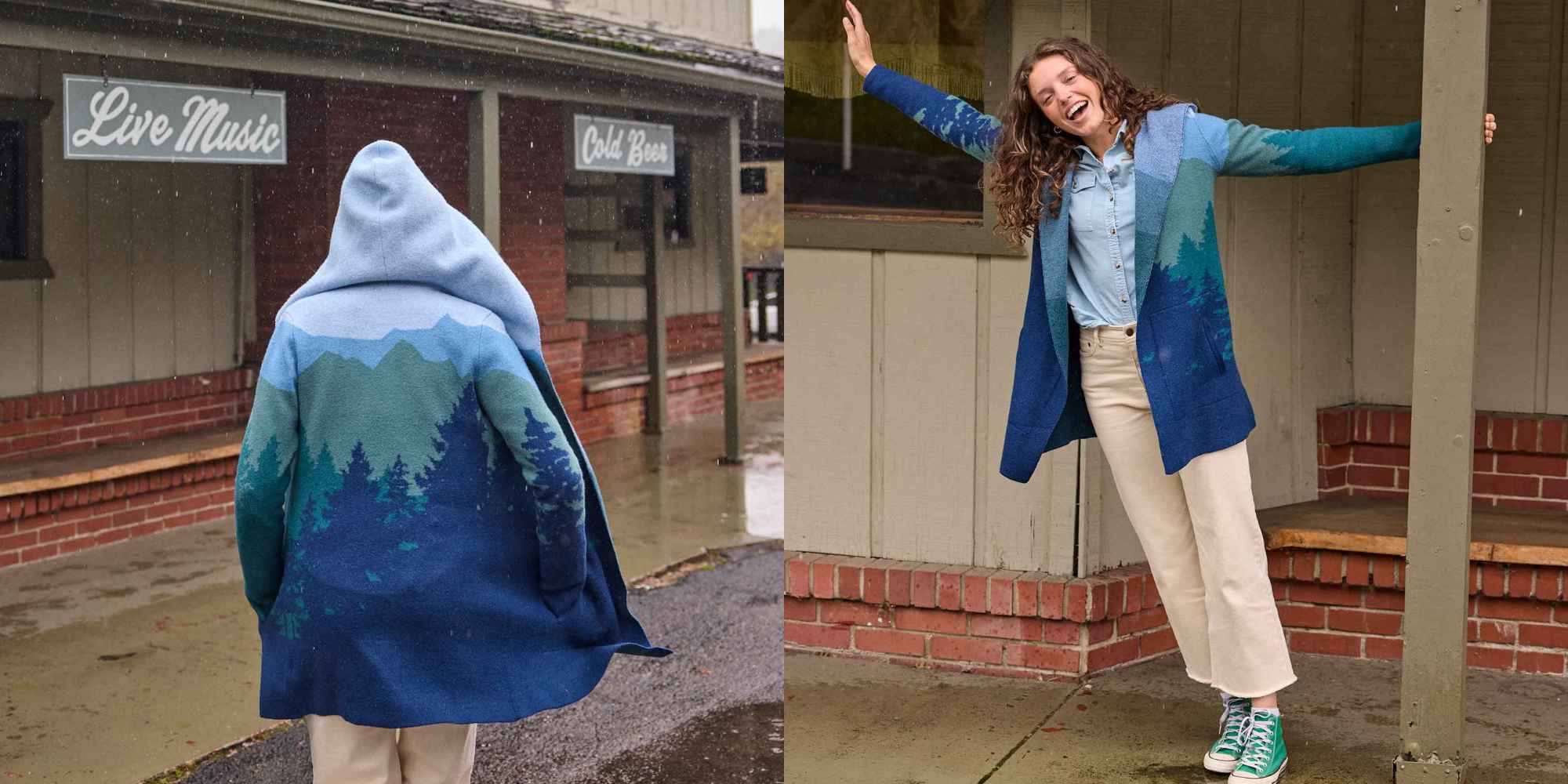
Woven with a beautiful alpine jacquard pattern, this hoodie is made from non-mulesed Merino wool and features pockets at the sides. It’s ideal as a mid-layer under a longer coat when you’re out exploring, or as a cosy item for grabbing a post-walk hot chocolate.
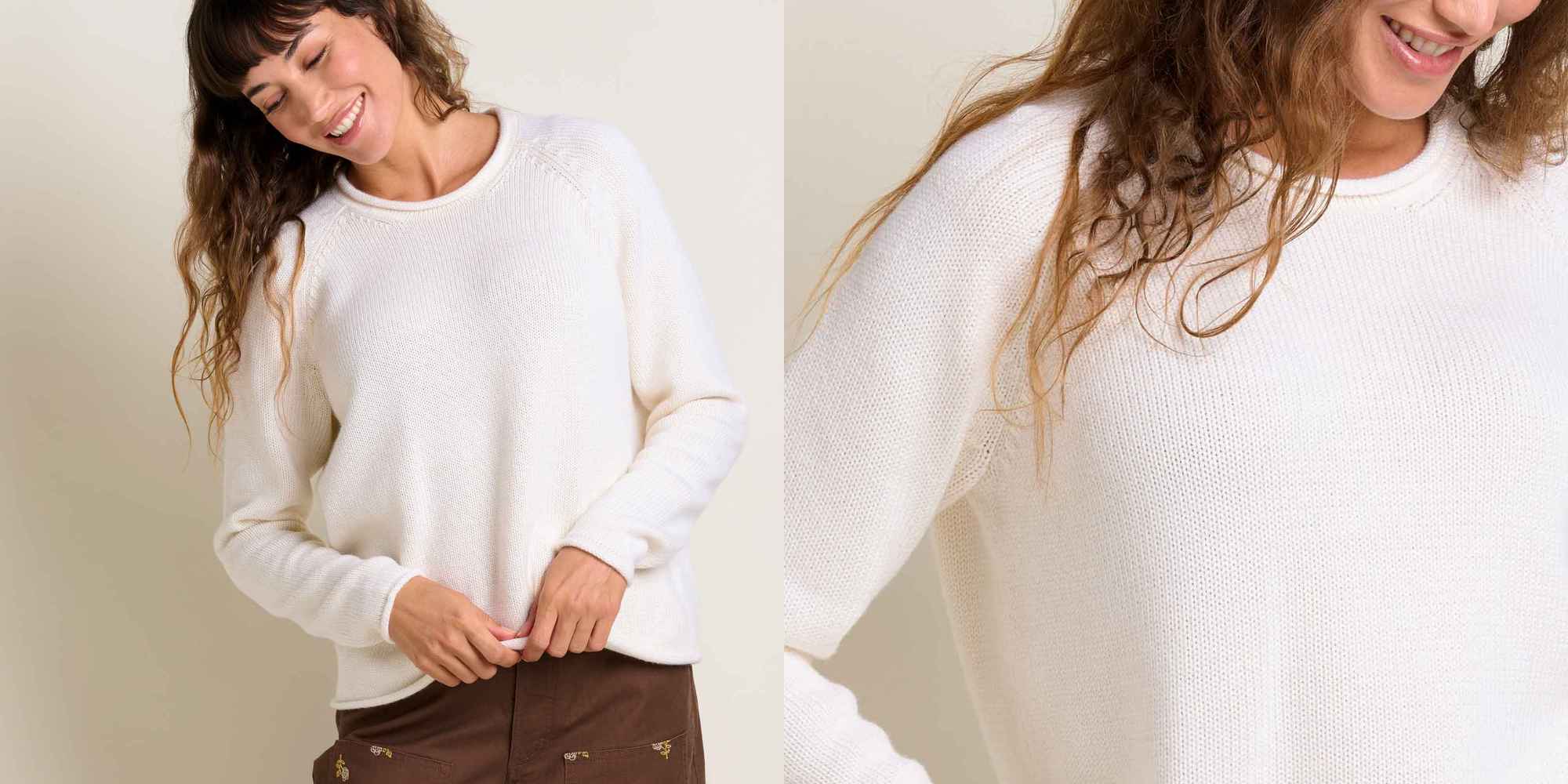
This Alpineglo sweater is a blend of 50% organic cotton and 50% non-mulesed Merino wool, so it’s going to help regulate your temperature in most climates. On top of that, the neutral tone and straight fit make it really versatile—you’ll be reaching for it on the regular.
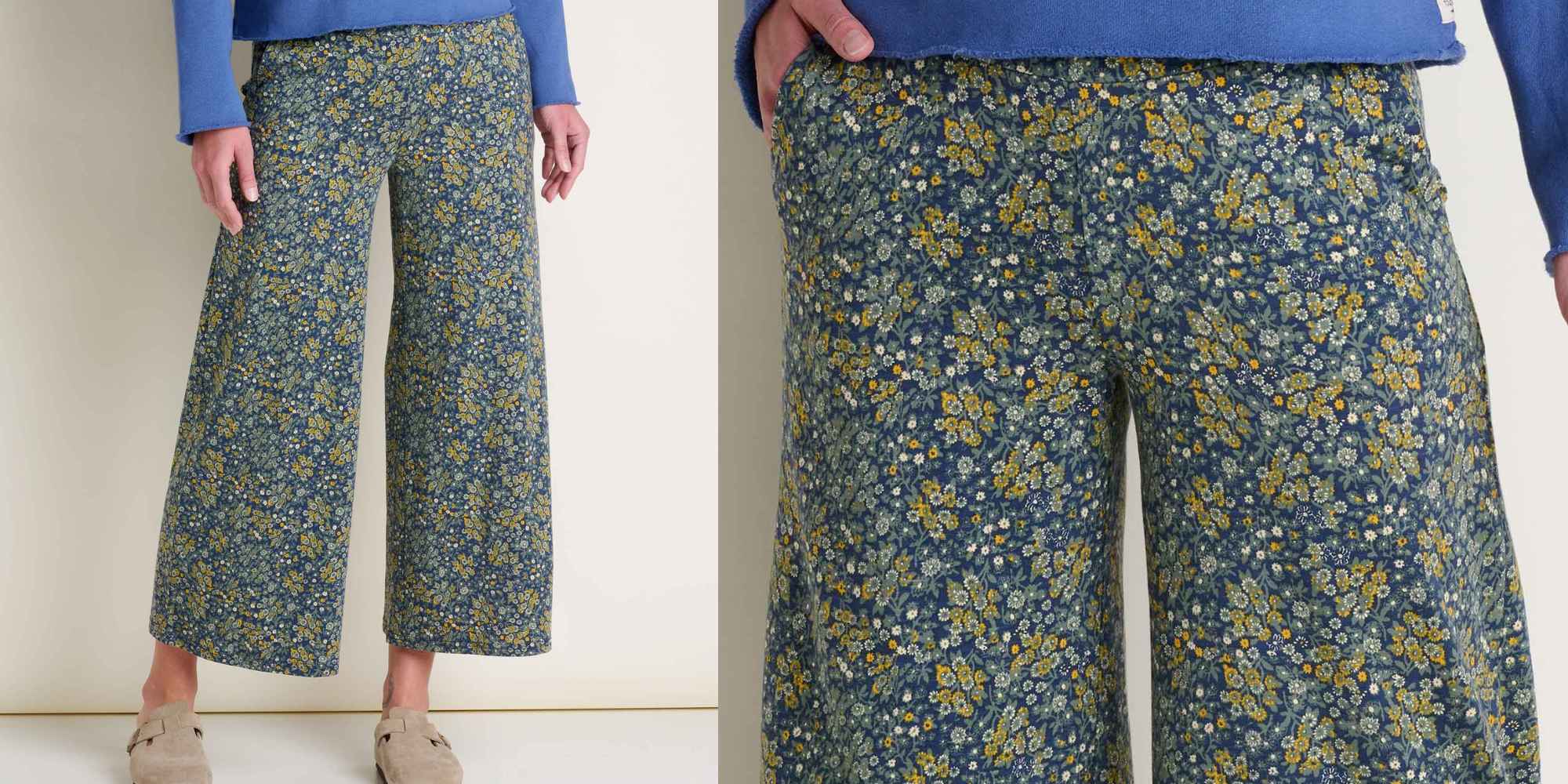
Toad&Co calls these cropped trousers “sweatpant comfortable, going-out presentable”, which makes sense, given they’re made with organic cotton and Tencel Lyocell for softness and have a comfortable wide waistband, not to mention a pretty floral pattern.
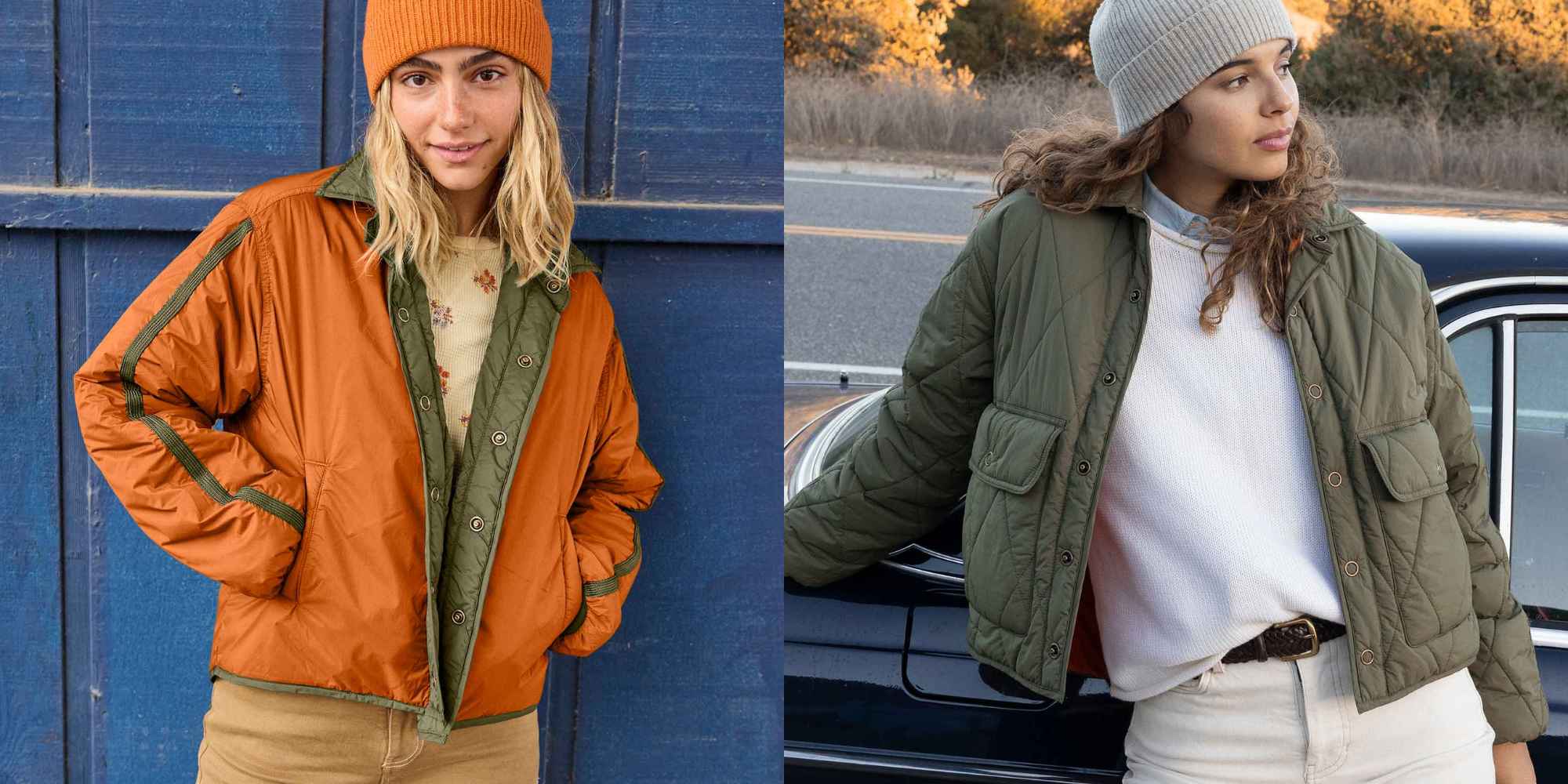
This Nomader jacket is reversible, packable, and water-resistant. In other words, it’s the ideal item to take with you for outdoor adventures. It’s made from recycled nylon and lightly quilted for warmth.
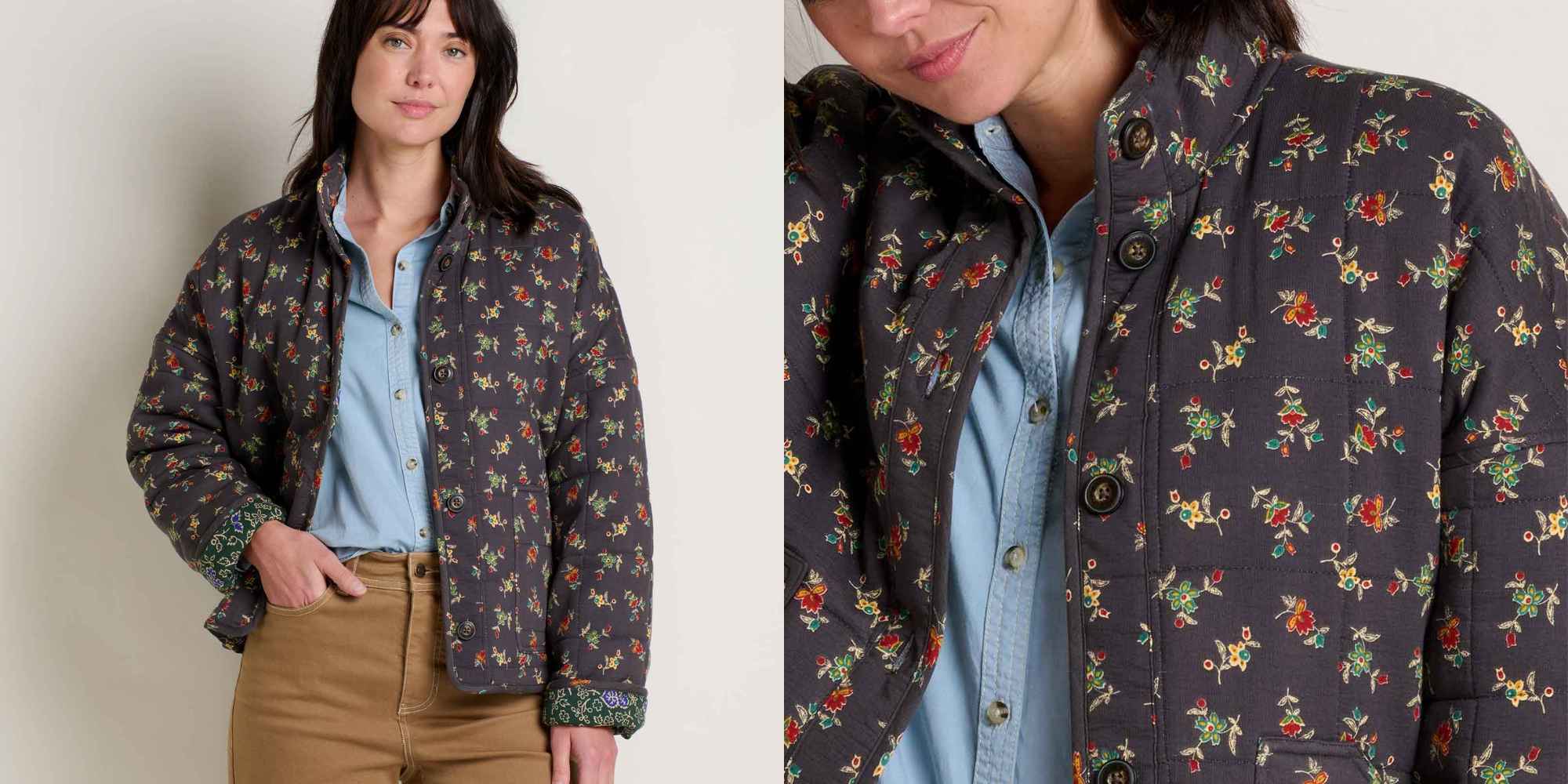
Toad&Co picked the crepe-like organic cotton for this jacket so that you could fold it away in a bag and have it still look presentable when you pull it out. It’s also packed with recycled polyester padding for extra warmth.
 Balsam Cutoff TrousersThese Balsam Trousers are made with a tiny bit of stretch and a special waistband for comfort, so they’ll flex with you and feel good all the time. The neutral brown colour also goes with so many options.
Balsam Cutoff TrousersThese Balsam Trousers are made with a tiny bit of stretch and a special waistband for comfort, so they’ll flex with you and feel good all the time. The neutral brown colour also goes with so many options.These Balsam Trousers are made with a tiny bit of stretch and a special waistband for comfort, so they’ll flex with you and feel good all the time. The neutral brown colour also goes with so many options.
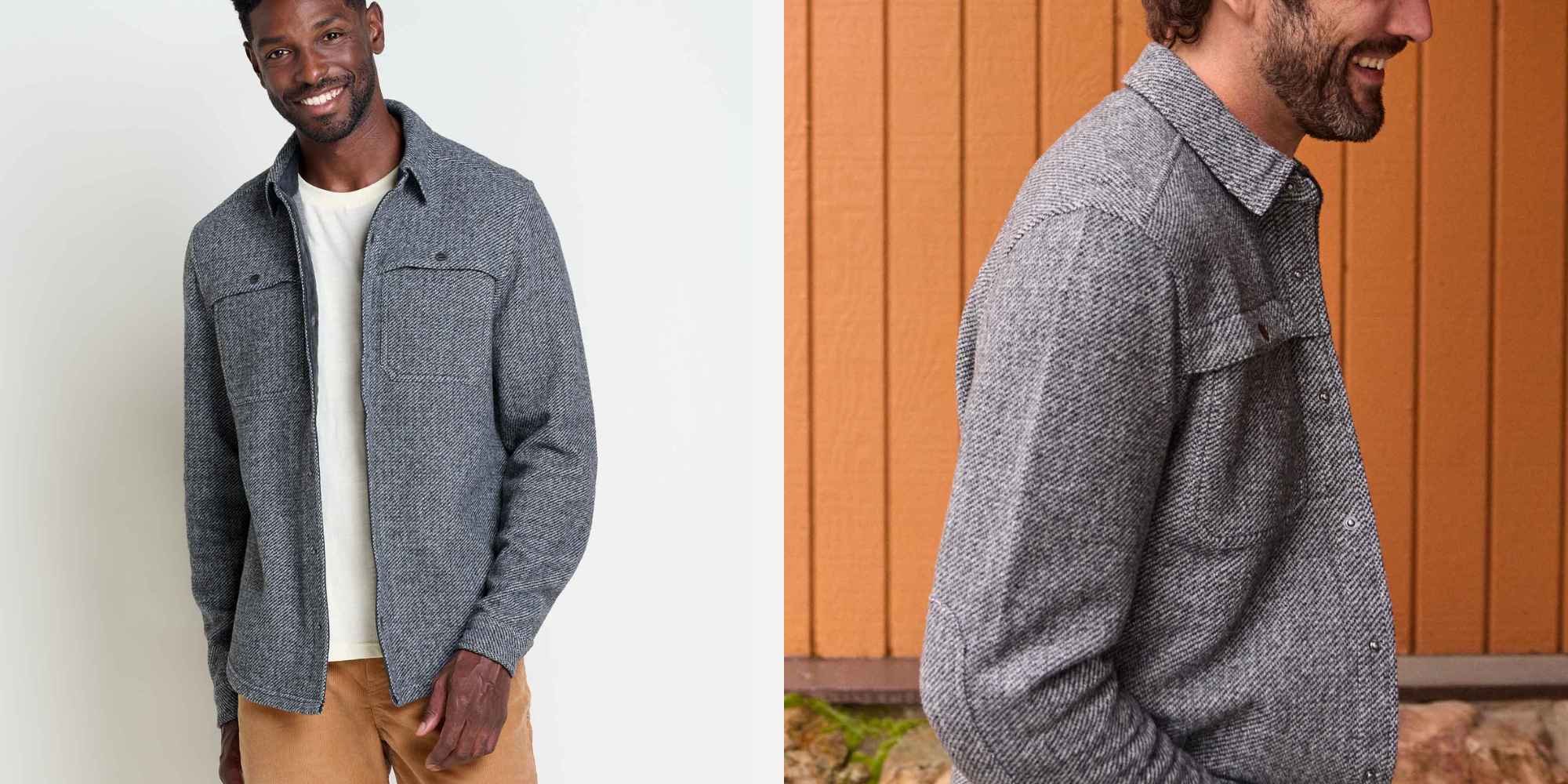
Going from a walk to dinner? From the office to drinks? This Kennicott shirt jacket fits the bill for all of the above. The smart twill fabric incorporates recycled Italian wool.

This is Toad&Co’s Re-Form Herringbone: a blend of recycled cotton and polyester that offers a soft drape and an attractive herringbone weave that looks smarter than the average checked shirt.
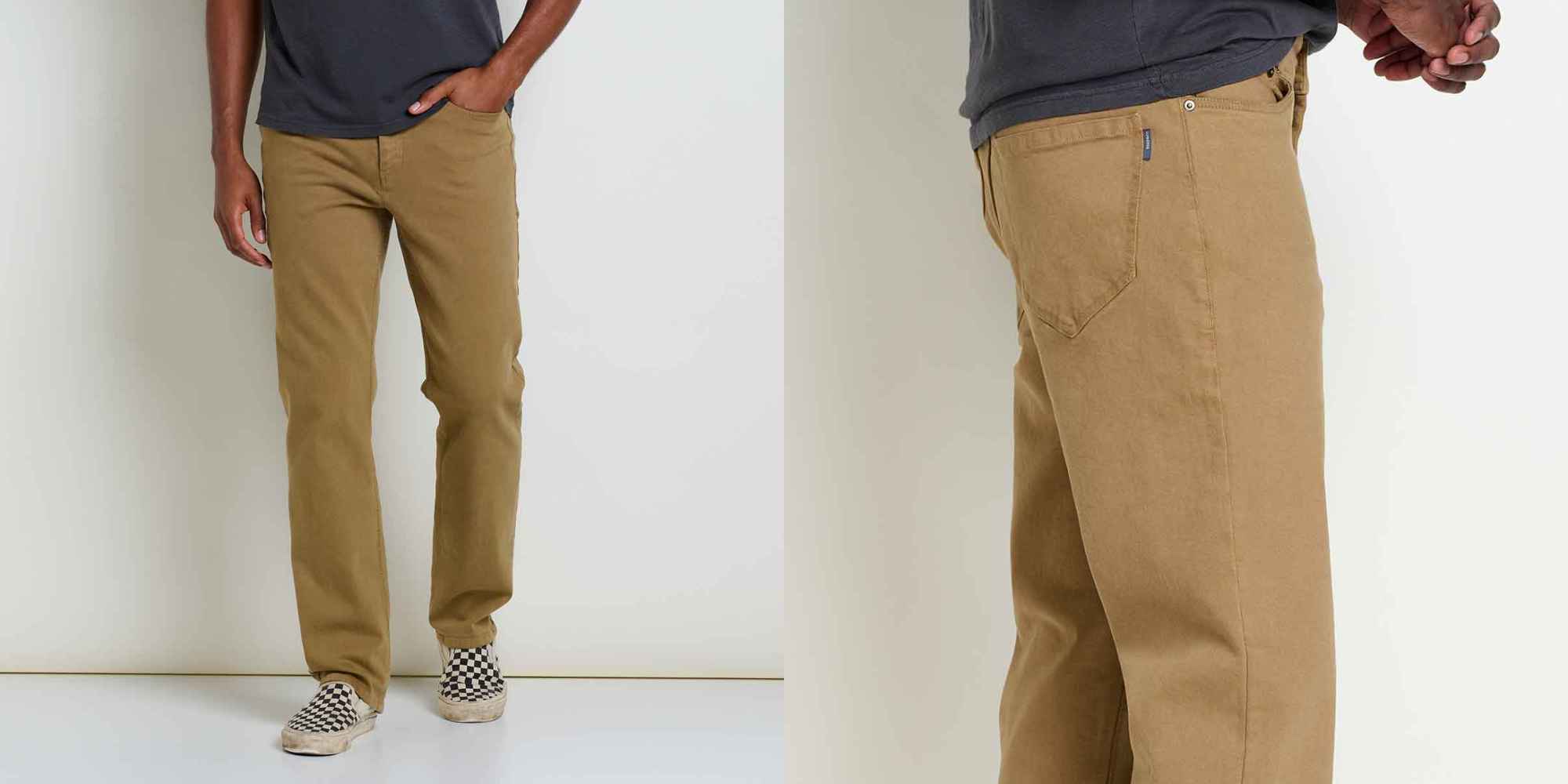
Like the women’s equivalent, these Balsam trousers have a touch of stretch and a comfortable ‘FlexForm’ waistband that mean they’re going to feel comfortable from the get-go—and you won’t need to worry about a belt, either.
Discover more of Toad&Co’s clothes.
The post How Toad&Co’s Clothes Help Everyone Enjoy the Outdoors appeared first on Good On You.
Green Living
50 DIY Christmas Presents Anyone Can Make
Last Updated on November 21, 2025
If you’re on the handmade Christmas kick this year, you’re not alone. So am I!
I’m choosing presence over presents this year and bringing back the 90s Christmas I loved as a kid – simple, crafty, low pressure, and full of small moments that feel meaningful.

If you want to gift thoughtfully, and without breaking the bank, these DIY Christmas presents are for you. There’s something for everyone on this list – whether you prefer easy or complex DIYs.
I’ve included all kinds of DIYs – beauty, cooking, fashion, and practical gifts alike. Best of all? Many of these tutorials are zero waste (or close to it).
what are good homemade Christmas gifts?
Good homemade Christmas gifts include consumable items, like homemade nut butters, vanilla extract, or jams. But not all homemade gifts are edible – you can also make items like bath bombs, candles, body scrubs, beeswax wraps, and so much more.
If you’re extra crafty, you could even make wooden gifts (like shelving or tablet holders), ceramic items (like mugs or jewelry), or knitted/crocheted pieces (like blankets, scarves or hats).
It all depends on your level of skill, time at your disposal, and ingredients/materials you have access to.

what are good inexpensive Christmas gifts?
Some good inexpensive Christmas gifts are DIY cornstarch ornaments, handmade body or lip scrub, seasoned salt blends, and homemade treats (like these chocolate chip cookies or vegan sugar cookies).
And never forget to hit up your local thrift store – you can find so many great items that would make affordable gift baskets!
Wrapping DIY Christmas gifts also doesn’t have to be expensive. Reusing gift bags and ribbons from last year, upcycling packaging paper, or even repurposing a scarf for furoshiki wrap are all low-waste and affordable!
RELATED: Gift Wrapping: How to Keep It Easy, Eco and Chic
how can I make a last minute gift?
You can make a last minute gift by getting crafty using the materials you have on hand!
For example, if you have a cardboard box, why not try making an upcycled cardboard dollhouse, vehicle, or pirate ship for a child? For adults, a DIY storage container or a shoe rack works.
One of my fav last minute gifts is scented bath salts in an upcycled glass jar – just a little Epsom salt and essential oil blends will do the trick!
Here’s my list of DIY Christmas gifts – something for everyone and every skill level.

- Bath salts
- DIY makeup like mascara/eyeliner, or lip to cheek
- Bath bombs
- Lip scrub
- Lip balm
- Face mask
- Body lotion
- Natural perfume
- Dry shampoo
- Shampoo bar
- Body soap
- Deodorant
- Rose water toner
- Hand-poured coconut/soy/beeswax candles
- Simmer pot in a jar
- Cookie, brownie, soup mix or hot cocoa mix in a jar
- Handmade seasoning blends
- Vanilla extract
- Vegan caramels or plant-based butter wrapped in compostable parchment paper
- Herb or citrus infused olive oil
- Peanut butter + jam
- Beeswax wraps
- Apple or pumpkin butter
- Sourdough or no-knead artisan bread
- Finished embroidery hoops
- Embroidered pillows, tote bags, clothes or cloth napkins
- Sewn cotton rounds
- Knitted scarf, hat, gloves, sweater, or blanket
- Hand warmers
- Quilt blanet, quilted coat or quilted wallet
- Tie dyed secondhand silk scarves, clothing or sheets
- Hand painted or drawn artwork
- Air dry clay paint palette
- DIY wooden frame for paintings or print photos
- Handmade ceramics (mugs, chawan, chasen holder, vase, spoon rest, etc.)
- Woodworked items (birdhouse, shelving, bookcase, wall guitar mount)
- Carving wooden bowls by hand
- Natural branch coasters
- Plant propagations in one of these DIY planters
- Seed balls using native seeds
- Handwoven baskets or bowls
- Macrame produce bag
- Macrame plant hanger
- Fabric paper mache bowls
- Upcycled paper earring jewelry
- Clay earrings
- Handmade plush toys
- Felt ‘food’ toys
- Wooden toys (like vehicles, blocks, or dollhouses)
- Knit or crocheted baby clothes
What do you think of these DIY Christmas presents? Let me know in the comments!
The post 50 DIY Christmas Presents Anyone Can Make appeared first on Going Zero Waste.
Green Living
8 Best Non Toxic Rugs For a Sustainable Home
Last Updated on November 6, 2025
Did you know most rugs are made from polyester, aka plastic? Arguably, a good chunk of our furniture and home decor is nowadays.
And lets not forget – rugs can get a lot of foot traffic. If it’s made from polyester, chances are those plastic fibers are going to shed and get onto us. Or worse, in us.

Some of the links in this post are affiliate links; for more information please see my disclosure policy.
Microplastics have been found in human feces, blood, and even placentas. And according to a study from Stanford University, those who had microplastics in their plaque had a higher risk of heart attack, stroke and death than those who didn’t.
On top of this, 5 billion pounds of rugs go to waste each year – that’s 2% of total US landfill. And if they’re made from plastic? They won’t biodegrade.
It’s more important than ever to reduce our exposure to microfibers where we can. Which is why I’ve rounded up the best non toxic rugs on the market.
what is the least toxic rug?
The least toxic rug will have sustainable materials and use no harsh chemicals (like PFAs) in their production.
Here’s what to look for when purchasing a non-toxic rug:
- Sustainable materials, such as organic cotton, jute, sisal or wool
- Low-waste packaging + delivery
- Natural, non-synthetic dyes
- Third-party certifications like OEKO-TEK, Fair Trade, GOTs
- Easy to spot-clean or machine wash
- Available in various styles, patterns + colors to suit your needs
do all rugs have PFAS?
According to Department of Toxic Substances Control (DTSC), only four samples of 201 carpets and rugs were found to contain more than 100 parts per million in their fibers, indicating PFAS were intentionally added to the products.
However, while PFAs may not be a huge concern for rugs, microplastic pollution is, specifically if your carpet is synthetic. Your best bet is to check the material your rug is made from and choose natural fibers whenever possible.
what is the best non-toxic rug for nursery?
The best non-toxic rug for a nursery would be made from natural materials like wool and organic cotton (which are soft on baby’s skin).
I recommend also checking for natural latex for the rug backing and underlay pads. Brands on this list that offer kid-friendly sizes and patterns include Lorena Canals, Nestig, Quince, and Loomy (more on each below).
what brand of rugs are non-toxic?
The brands of rugs that are non-toxic are listed below. I’ve gone ahead and highlighted some of my favorite features of each brand, but it isn’t an exhaustive list. Be sure to check out their websites for more information.

1. hook and loom
- Various rug sizes, shapes + patterns
- Made from GOTs certified organic cotton, recycled cotton + wool
- No dyes or harmful chemicals
- No latex
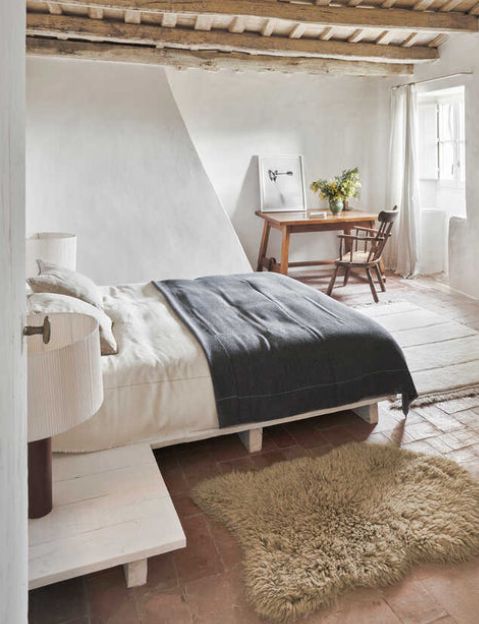
2. lorena canals
- Various rug sizes, shapes + patterns
- Handmade by artisans using recycled materials like organic cotton + wool
- Nontoxic dyes
- Make your own option
- Machine washable
- Rugcycled line made from recycled materials in their own factory

3. sabai
- Field rug
- Woven using wool + jute
- Available in 3 varying sizes
- Rug pad add-on available for reduced movement
- Certified B Corporation

4. quince
- Various sizes + patterns, best known for vintage-inspired looks
- Made from natural materials like wool, jute, + cotton
- Handcrafted by artisans in India
- Transparent pricing practices
- Compostable poly bags + recycled plastic mailers

5. west elm
- Rugs for every area of the home, in varying sizes
- Made from wool, jute, hemp, cotton, TENCEL + recycled materials
- Handspun by skilled artisans in India
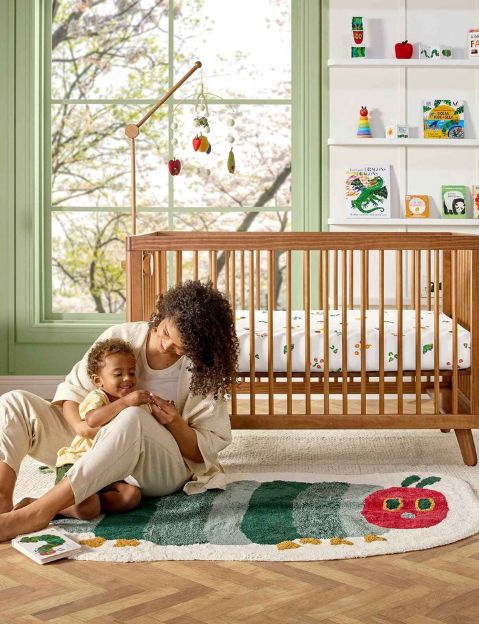
6. nestig
- Area + washable rugs made with fun shapes/designs for babies + kids
- Washable rugs made with organic cotton + nontoxic dyes
- Area rugs made with cotton + each colored element crafted from recycled cotton
- Handmade in Brazil

7. cold picnic
- Various rug shapes + sizes, abstract patterns + bold colors
- Made with wool, bamboo silk, cotton, hemp, + deadstock materials
- Designed in a Brooklyn studio, handmade by artisans in India
- Committed to reducing packaging waste where possible
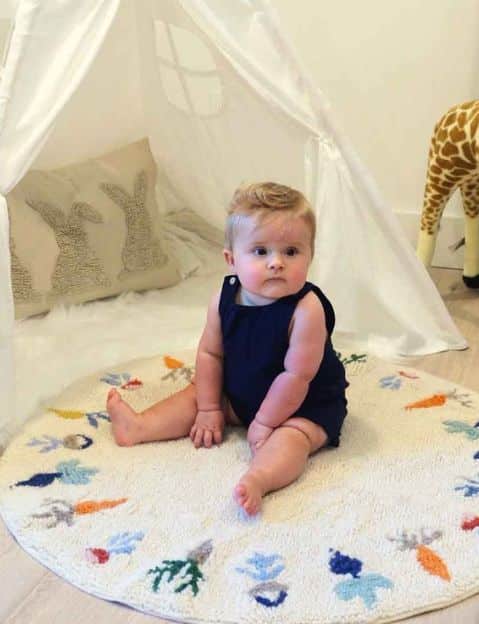
8. loomy
- Various rug sizes, shapes + patterns
- Made from banana silk, hemp, jute, recycled fiber, viscose, or wool
- Any colored yarn dyed using low-impact techniques
- Handcrafted by indigenous artisans
So what do you think of these non toxic, sustainable rugs? Let me know in the comments!
The post 8 Best Non Toxic Rugs For a Sustainable Home appeared first on Going Zero Waste.
-
Climate Change4 months ago
Guest post: Why China is still building new coal – and when it might stop
-
Greenhouse Gases4 months ago
Guest post: Why China is still building new coal – and when it might stop
-
Climate Change2 years ago
Spanish-language misinformation on renewable energy spreads online, report shows
-

 Greenhouse Gases2 years ago
Greenhouse Gases2 years ago嘉宾来稿:满足中国增长的用电需求 光伏加储能“比新建煤电更实惠”
-
Climate Change Videos2 years ago
The toxic gas flares fuelling Nigeria’s climate change – BBC News
-

 Climate Change2 years ago
Climate Change2 years ago嘉宾来稿:满足中国增长的用电需求 光伏加储能“比新建煤电更实惠”
-

 Carbon Footprint2 years ago
Carbon Footprint2 years agoUS SEC’s Climate Disclosure Rules Spur Renewed Interest in Carbon Credits
-
Renewable Energy5 months ago
US Grid Strain, Possible Allete Sale



